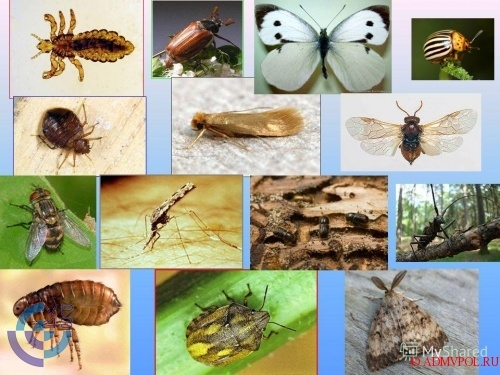Around the world, new eco-friendly businesses have begun to emerge that make goods from insects. It’s not just about food, but also about food processing, the production of beneficial compounds and animal feed. Let’s talk in more detail about what and how insects are made.
What insects can be used to build an environmentally friendly production
For production, insects are needed that multiply rapidly and build up a protein mass. The flour beetle, migratory locust, desert locust, domestic cricket are well suited for this.
In addition, the larva of the South American black lion fly is well suited for the same requests: when cultivated on an organic substrate, it gains 500 times its mass in one week.
The fly is omnivorous, capable of developing in wide ranges of temperature and humidity, does not live in human dwellings. With proper cultivation, its larvae can contain 40% protein, 40% fat, calcium, phosphorus.
Proteins and fats, which are obtained from the conversion of organic waste with the help of the black lion, can be used in food, pharmaceuticals and cosmetics.
Also, these larvae can feed on organic waste from the food industry, retail chains and restaurants.
Insects can be used to make balanced animal feed
In order to produce animal feed, a technology has been developed for obtaining feed protein from industrially cultivated insects.
Scientists in Brazil have tested the use of insects as a suitable ingredient in animal diets. Tests have shown that crickets, black lion fly larvae, and mealworms have levels of protein digestibility similar to soybeans, but provide more lipids (10 to 35%), vitamins and minerals.
Research jointly conducted by UFMG and the Brazilian Agricultural Research Corporation (Embrapa) also examined the effects of this feed on quail, fish and domestic animals. The results showed better feed conversion and better meat quality due to the high lipid content of the insects.
Chitin, lauric acids and antimicrobial peptides found in insects can be beneficial for meat and dairy animals, and, for example, reduce the need for antibiotics.
And in November 2020, it became known that Nestle was the first of the large companies to start producing pet food based on insect protein – more precisely, the larvae of the black lion fly.
So far, we are talking about one product that will be sold only in Switzerland. However, it is planned to enter other markets next year. As noted by Reuters, the corporation’s interest in alternative sources of protein is associated with a desire to meet the demand of buyers concerned about the harm that traditional animal husbandry is causing to the environment.
Protein-lipid insect meal
The biomass of flies is not only a raw material for the production of protein products, but also a source of valuable substances. The larva of the black lioness contains the amino acid arginine, which a person receives from his mother’s milk.
Now this substance for baby food is obtained from pine nuts, but in the larva of a black lion it is seven times more of it.
Dried insects are used whole or processed into flour, which is 70% protein. It can be used to make bread and baked goods. The characteristics of finished products made from such flour are improved: the freshness of the bread is maintained for up to ten days. Insect flour can also replace soy flour in minced meat and sausages.
Manufacture of medicines and cosmetics
Ingredients derived from insects can even replace some drugs.
Insectta has developed a patented technology for extracting biomaterials from an exoskeleton. One of these biomaterials, chitosan, is a substance with antioxidant properties; it is used in cosmetic and pharmaceutical products. Insectta plans to produce 500 kg of chitosan per day.
Chitin is one of the most abundant polysaccharides in nature. It is also found in insects, so they can be used in cosmetics. In its natural state, chitin is found in the shells of sea crabs, shrimp, krill, lobsters, crayfish, as well as in the outer skeleton of zooplankton, including corals and jellyfish. Insects such as butterflies and ladybugs contain chitin in their wings. The cell walls of yeasts, fungi and various fungi also contain this natural substance.
Chitosan properties:
• stops the aging process of the body and normalizes immune responses;
• heals wounds;
• enhances blood circulation in microvessels and the smallest capillaries;
• removes from the body harmful salts of heavy metals, drug residues, radionuclides and other accumulated chemical slags and poisons;
• cleanses the blood and lymph, inhibits the development of cancer.
Due to its unique properties, chitosan has a wide range of applications. In medicine – for the manufacture of artificial skin, with the help of which traumatic skin injuries are treated, the activation of healing without scarring, which is especially important in the issue of cosmetic correction, as a suture material, due to its hypoallergenic properties and the ability to absorb itself.
As a dietary supplement when taken orally, chitosan acts in the gastrointestinal tract as a powerful adsorbent and removes toxic substances from it. Chitosan is also used in food manufacturing, agriculture, and environmental protection.
Insect food
Insect food is common in the national cuisines of Asia (China, Thailand, India, Japan, Cambodia), Africa (Cameroon, Democratic Republic of Congo, Ghana, Botswana, Uganda) and North America (Mexico).
“Insects are just as high in calories as beef,” said Marcel Dicke of Wageningen University in the Netherlands.
To date, more than 1.4 thousand species of edible arthropods have been identified. And experts check them for safety, because many of them contain harmful bacteria that can cause allergies in a person or lead to other, more serious diseases.












